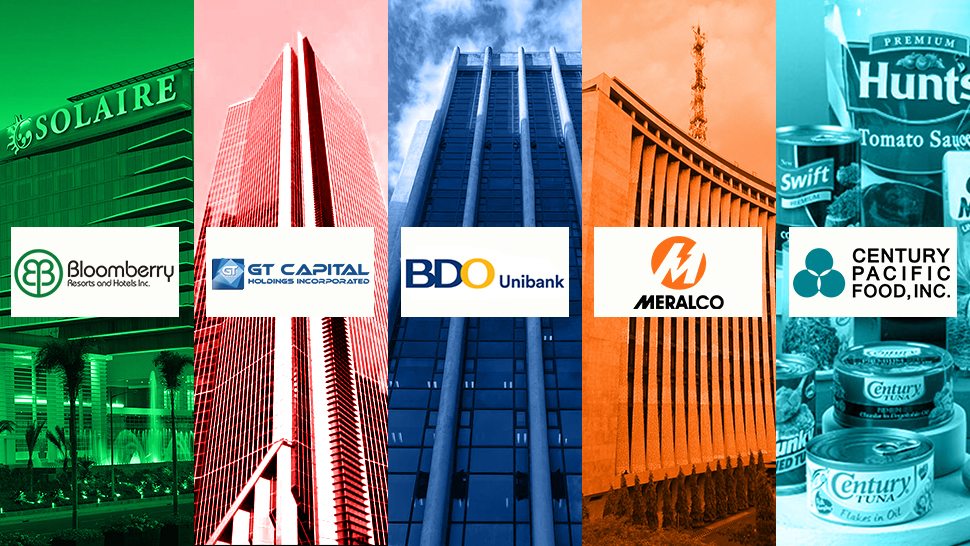Financial Adviser: 5 Best Performing Blue-Chip Stocks in the First Nine-Months of 2023 and How to Profit from Them

While many stocks have succumbed to the market’s downward pressure, certain blue-chip stocks have managed to stay resilient, defying the overall market trend.
These stocks, particularly those that belong to sectors that have shown remarkable strength, not only weathered the storm but also offered hope to investors seeking reliability in uncertain times.
In general, the best-performing blue chips often hail from industries that have proven to be recession-resistant. Identifying these sectoral leaders provides investors with valuable insights into areas of the market that may offer more stable returns.
Blue-chip stocks are also known for their consistent dividend payouts that can be particularly attractive during uncertain times. Companies with a history of maintaining or increasing dividends not only offer a source of income for investors but also signal financial stability and confidence in their long-term prospects.
And if we take a closer look at the earnings stability of these blue-chip stocks, companies that have managed to sustain their profitability despite the challenging economic backdrop are also great prospects for investment.
Whether through cost-cutting measures, operational efficiency, or diversified revenue streams, stocks that can outperform the market are those that have the ability to weather economic storms and deliver consistent returns.
Out of the 30 stocks in the PSE Index, only 10 have recorded gains this year, achieving an average increase of 15.6 percent year-to-date, a notable feat considering the overall market's loss of 16 percent.
As we go through the complexities of the financial markets, understanding the strengths of these resilient stocks can help us in make the right investment decisions.
For the first nine months of 2023, let’s take a look at the five biggest blue-chip winners to date and how to profit from them:
ALSO READ
1| Bloomberry Resorts Corp
Price: P9.97
Year-to-date gain: +30.3 percent
Bloomberry Resorts Corp (PSE: BLOOM) is one of the largest operators of resort and gaming companies in the country. BLOOM owns Solaire Resort Entertainment in Entertainment City and Jeju Sun Hotel and Casino in Jeju Island, South Korea.
BLOOM derives its revenues mainly from gaming, constituting about 87 percent with hotel, food and beverage contributing about six percent and retail also accounting for six percent.
Before the pandemic, BLOOM experienced annual revenue growth averaging 10.9 percent, resulting in an average annual earnings growth of 19.6 percent. In 2019, BLOOM’s total revenues reached P38.5 billion with its net income growing to P9.9 billion.
During the pandemic years of 2020 and 2021, BLOOM incurred substantial losses, accumulating a total of P12 billion in losses as its total revenues plummeted by almost 50 percent to below P20 billion per year.
Last year, BLOOM's total revenues made a robust recovery, surging by 72 percent from P18.7 billion in 2021 to P32.2 billion in 2022. This turnaround allowed the company to achieve a net income of P5.2 billion, marking a significant improvement from the net loss of P4.2 billion.
This year, BLOOM's total revenues for the first nine months of 2023 continue to show growth, increasing by 32 percent to reach P36.1 billion from P27.3 billion in the same period last year. The strong revenue growth of BLOOM has doubled its net income, reaching P8.3 billion compared to P4.05 billion in the previous year.
The robust performance of BLOOM has mirrored the significant increase in its stock price, which grew by as much as 52 percent from P7.65 per share at the beginning of the year to a high of P11.68 per share in August. BLOOM’s stock price has since corrected near its historical support level at P9 per share.
If we annualize BLOOM’s nine-month revenues, we can estimate that the company will likely achieve total revenues of P47.5 billion by year-end, surpassing its 2019 revenues and marking it as the highest in its history.
With the projected revenues of P47.5 billion this year, using the historical net profit margin of 22 percent, BLOOM should achieve a net income of P10.4 billion in 2023.
At P10.4 billion target earnings, BLOOM’s Price-to-Earnings (PE) ratio stands at 10.9 times, which is 30 percent lower than its pre-pandemic historical PE of 15.6 times.
If we value BLOOM at a PE ratio of 15.6, taking into account its robust earnings momentum in 2024, we should anticipate the stock to eventually trade at a minimum of P14.25 per share, giving a potential 42 percent gain from its current price.
2| GT Capital Holdings
Price: P560
Year-to-date gain: +28.7 percent
GT Capital Holdings (PSE: GTCAP) is one of the leading conglomerates in the country with interests in market-leading businesses across banking, property development, infrastructure and utilities, automotive assembly, financing, and insurance.
Among the key businesses in GTCAP's portfolio are 37.15 percent of Metrobank (PSE: MBT); 51 percent of Toyota; 100 percent of Federal Land; 25.3 percent of AXA Philippines; and 15.98 percent of Metro Pacific.
GTCAP's total revenues primarily derive from its automotive business, contributing about 86 percent of the total. This is followed by equity earnings from its investments, contributing six percent, with the balance coming from real estate and other income.
After GTCAP suffered its lowest revenues in 2020 at P134 billion and P6.5 billion net income, the company quickly recovered in 2021 by increasing its total revenues by 29 percent to P174 billion and net income by 67 percent to P10.9 billion.
Last year, GTCAP’s total revenues grew by 40 percent to P245 billion, surpassing its 2019 revenues of P222 billion by 10 percent. The strong surge in revenues translated to a remarkable 67 percent increase in net income to P18.4 billion.
This year, GTCAP's total revenues for the first nine months of 2023 have sustained growth, marking a 25 percent increase to P201 billion from P160 billion in the previous year. This growth has led to a substantial 54 percent increase in net income, rising from P14.9 billion in the previous year to P23.1 billion.
If we annualize GTCAP’s nine-month revenues, we can estimate that its total revenues will likely reach P279 billion by the end of the year. Based on its historical net profit margin of 11 percent, we can project GTCAP’s net income for 2023 to be approximately P30.7 billion, reflecting a 66 percent increase from the previous year.
At this projected net income of P30.7 billion, GTCAP’s PE ratio stands at only 3.9 times, a substantial reduction from its pre-pandemic average PE ratios of 14.4 times.
Furthermore, GTCAP’s current share price stands at only 52 percent of its book value as of September, which is P1,071 per share. Once again, this valuation appears considerably lower than its pre-pandemic average Price-to-Book Value (PBV) ratio of 1.23 times.
The stock price of GTCAP has been consistently trading below P600 per share since the 2020 pandemic, and it has not surpassed this resistance level for an extended period, despite positive changes in its fundamental valuation.
Given the substantial discount in GTCAP's current pricing multiples, the stock presents a significant value investing opportunity. If we anticipate the market to revert to its pre-pandemic multiples in the future, GTCAP's stock should eventually appreciate to a range of P1,300 to P2,000 per share in the long run.
3| BDO Unibank, Inc
Price: P132.1
Year-to-date gain: +24.98 percent
BDO Unibank (PSE: BDO) is the largest bank in the Philippines in terms of total resources, customer loans, deposits, assets under management and capital. It has the largest distribution network with over 1,700 operating branches and 4,700 ATMs nationwide.
BDO is a member of the SM Group, one of the country’s largest and most successful conglomerates with businesses spanning retail, mall operations, property development, and financial services.
BDO’s total interest income derives primarily from loans and receivables, which contributes about 82 percent of the total with the balance from trading of securities and investments in bonds and other debt instruments.
BDO's total interest income has experienced consistent growth, averaging a 12 percent increase annually, surging from P82 billion in 2016 to P145 billion in 2021. Concurrently, its net income also rose steadily, averaging 10.2 percent growth from P26.2 billion in 2016 to P42.8 billion in 2021.
Last year, BDO saw a substantial 33 percent surge in net income, reaching P57 billion compared to P42.8 billion in 2021. This remarkable financial achievement was underpinned by robust year-on-year revenue growth, marking a 17 percent increase from P145 billion in the previous year to P169 billion.
This year, BDO maintains its impressive earnings momentum with a substantial 47 percent growth in its nine-month total interest income, soaring from P119 billion to P175 billion compared to the same period last year.
This robust performance translates to a commendable 34 percent increase in earnings, reaching P53.9 billion from P39.9 billion in the corresponding period last year.
If we project BDO's nine-month total interest income to an annual scale, we can expect its total interest income by year-end to register at P250 billion, marking a historic high for the bank.
Using an average net profit margin of 30 percent, the outlook for 2023 appears promising, with an anticipated net income of P75 billion. This projection signifies a notable 31 percent growth compared to its net income of P57 billion in 2022.
At the projected net income of P75 billion, BDO’s Price-to-Earnings (PE) stands at 9.3 times, which is lower than its average PE ratios for the past three years at 10.5 times.
If we price BDO at its average PE ratio of 10.5 times we should expect its stock price to reach at least P147.8 per share.
The other way to price BDO is based on its Price-to-Book Value (PBV) ratio. At its share price, BDO’s PBV ratio stands at 1.4 times, which is relatively higher than its average of 1.08 times.
However, BDO’s higher PBV ratio is justified by its higher Return on Equity (ROE). As of September this year, BDO’s strong earnings growth has increased its ROE to 15.1 percent, higher than 13.02 percent it registered in the same period last year.
If we correlate BDO’s ROE to its actual PBV ratio in the past 10 years, we will find that every 1.0 percent increase in BDO’s ROE corresponds to an increase in its PBV ratio at 0.049 times.
If we expect BDO’s ROE for 2023 to end at 15 percent, we can price the stock, using the historical correlation model, at 1.56 Price-to-Book Value ratio.
At this PBV ratio, and assuming BDO ends the year with book value per share of P98, we should target a fair value price for the stock at P152 per share.
4| Manila Electric Company
Manila Electric Company or Meralco (PSE: MER) is the largest private sector electric distribution utility company in the Philippines covering 39 cities and 72 municipalities.
MER’s franchise area of over 9,685 square kilometers constitutes about three percent of the total land area of the Philippines. Despite this relatively modest land share, MER plays a pivotal role, contributing a significant 55 percent of the country’s overall electricity output.
Meralco has consistently grown its revenues by an average of two percent per year over the last 10 years, from P256 billion in 2011 to P318 billion in 2021. This steady growth in revenues translated to a 5.9 percent annual earnings growth rate from P13.2 billion in 2011 to P23.5 billion in 2021.
Last year, MER’s total net income grew by 18 percent to P28.6 billion as its total revenues surged by 33 percent to P426 billion from P256 billion in 2021.
This year, MER’s total revenues for the first nine months of 2023 grew only by six percent to P335 billion from P314 billion in the same period last year.
Despite this, MER’s net income increased by 43 percent to P28.4 billion from P19.8 billion in the previous year due to lower cost and expenses and increased other income stemming from its equity in net earnings of associates and joint ventures.
MER is bound to conclude the year with unprecedented earnings considering that its nine-month net income of P28.4 billion has already covered its 2022 net income. Extrapolating this performance, MER is on track to potentially achieve a P37.8 billion net income in 2023.
At a projected P37.8 billion net income, MER’s PE ratio stands at 11 times, which is considerably lower than its three-year historical PE average of 15.4 times.
If we apply MER's historical average PE ratio of 15.4 times, we can anticipate a potential breach of its resistance level at P400 per share in the short term. A successful breakout beyond this level may propel the stock toward its fair value target of P520 per share.
Meralco is one of the most reliable dividend payers in the market. The company pays out about 70 percent of its annual profits every year and has not missed a single year paying dividends for the last 25 years.
The strong earnings performance of MER has resulted in increased dividend payments. Last year, MER paid total cash dividends of P16.03 per share, 24 percent higher than the P12.88 cash dividends paid in 2021.
This year, MER paid total cash dividends of P19.55 per share, 21 percent higher than last year. At P19.55 cash dividends, MER currently boasts a dividend yield of 5.0 percent.
With the expected record earnings of MER this year, we can expect MER to continue increasing its cash dividends next year. Assuming MER will increase its dividends in 2024 by 21 percent again, the total cash dividends shall be P23.65 per share.
At this projected cash dividends, the prospective dividend yield of MER at current share price shall be 6.0 percent.
5| Century Pacific Food, Inc
Price: P30.40
Year-to-date gain: +17.83 percent
Century Pacific Food, Inc (PSE: CNPF) is one of the largest branded food and beverage companies in the Philippines. It owns a portfolio of well-known and trusted brands in the canned and processed fish, canned meat, and dairy and mixes business segments.
These brands include well-established names such as Century Tuna, 555, Ligo, Argentina, Birch Tree, Blue Bay, Swift, Angel, Kaffee de Oro, and unMEAT.
CNPF's total revenues have demonstrated consistent growth, averaging an impressive 14.1 percent annually over the past eight years. This rise has seen the company's revenues climb from P19 billion in 2013 to an impressive P54.7 billion in 2021.
The sustained growth in revenues of CNPF has corresponded to a robust annual earnings growth rate of 25.8 percent, increasing from P744 million in 2013 to P4.7 billion in 2021.
Last year, CNPF’s total revenues grew by 13.7 percent to P62.2 billion but its net income increased only by 6.9 percent to P4.9 billion due to higher operating expenses and finance costs.
This year, CNPF's total revenues for the first nine months of 2023 experienced a more moderate growth, increasing by seven percent to reach P50.4 billion compared to P46.9 billion the same period last year. This growth contributed to a nine percent increase in earnings, with net income reaching P4.6 billion, up from P4.2 billion in the previous year.
If we annualize CNPF’s nine-month revenues, we can anticipate the company’s total revenues for 2023 to reach P67.3 billion. Using an eight percent historical net profit margin, we can project CNPF’s net income to be at about P5.4 billion by end of the year.
At the projected net income of P5.4 billion, CNPF’s PE ratio stands at 19.9 times, which is relatively higher than its average PE ratios for the past three years at 18.8 times.
CNPF's stock price is hovering around its historical peak at P30.50 per share. Given the recent deceleration in both revenue and earnings growth over the last two years, there appears to be no compelling catalyst for the stock to experience further upward momentum.
Henry Ong, RFP, is an entrepreneur, financial planning advocate and business advisor. Email Henry for business advice hong@financialadviser.ph or follow him on Twitter @henryong888


